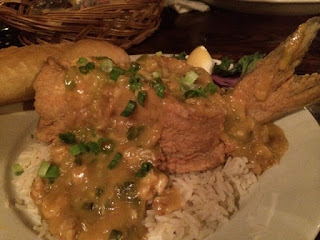I have swiss and rainbow chard growing in my garden right now, and have been cooking it every way I can think of - sauteed, baked into crispy chips, fresh in salads, atop grilled pizza - you name it, I've tried it. Here's my chard tart, my latest recipe for a delicious way to enjoy these greens:
1) Start with a simple pie crust, either store-bought or from scratch if you prefer. Fit into a 9-inch round pan.
2) Saute chard in a pan with onions and garlic, season with salt and pepper to taste.
3) Mix eggs, milk, grated gouda, and blue cheese (if desired.) The ratio is 3 eggs to a cup of milk and 1/2 cup cheese, roughly. Our next door neighbors have chickens so we get our eggs fresh, and it really does make a difference in flavor. Whisk together.
4) Add sauteed vegetables to the egg-cheese mixture. Pour into the pie crust:
1) Start with a simple pie crust, either store-bought or from scratch if you prefer. Fit into a 9-inch round pan.
2) Saute chard in a pan with onions and garlic, season with salt and pepper to taste.
3) Mix eggs, milk, grated gouda, and blue cheese (if desired.) The ratio is 3 eggs to a cup of milk and 1/2 cup cheese, roughly. Our next door neighbors have chickens so we get our eggs fresh, and it really does make a difference in flavor. Whisk together.
4) Add sauteed vegetables to the egg-cheese mixture. Pour into the pie crust:
(Note I placed the blue cheese on one side; you can also top with grated parmesan.)
5) Bake at 425 for 15 minutes and then reduce to 350 for 10 minutes or until golden brown like this:
Enjoy hot or cold, best served alongside (you guessed it) more salad from the garden!




































